Lens Flares 101 - How to Make Your Star Trek Film Shinier, or: Yes, The Future Really Is That Bright
I can tell you one thing. For the sequel? I think we should have a shitload more lens flares.
- JJ Abrams
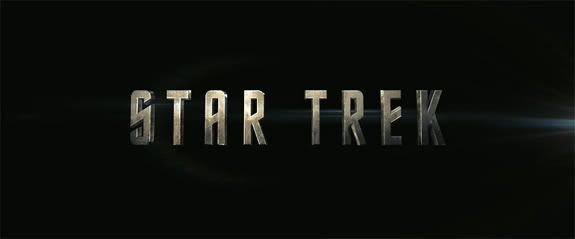
Even the title has one.
I want [to create] the sense that, just off camera, something spectacular is happening. There was always a sense of something, and also there is a really cool organic layer that's a quality of it. They [lens flares] were all done live, they weren't added later. There are something about those flares, especially in a movie that can potentially be very sterile and CG and overly controlled. There is something incredibly unpredictable and gorgeous about them. It is a really fun thing. Our DP would be off camera with this incredibly powerful flashlight aiming it at the lens. It became an art because different lenses required angles, and different proximity to the lens. Sometimes, when we were outside we'd use mirrors.

Lens flare is the light scattered in lens systems through generally unwanted image formation mechanisms, such as internal reflection and scattering from material inhomogeneities in the lens. These mechanisms differ from the intended image formation mechanism that depends on refraction of the image rays. For good optical systems and most images, flare is a secondary effect that is widely distributed across the image and thus not visible. But when an image includes a very bright light source, flare generated by a bright image region can have enough intensity to become very visible. The light produced by flare mechanisms superimposes broadly across the image, adding light to dark image regions and reducing image contrast.

Lenses with large numbers of elements such as zooms tend to exhibit greater lens flare, as they contain multiple surfaces at which unwanted internal scattering occurs.
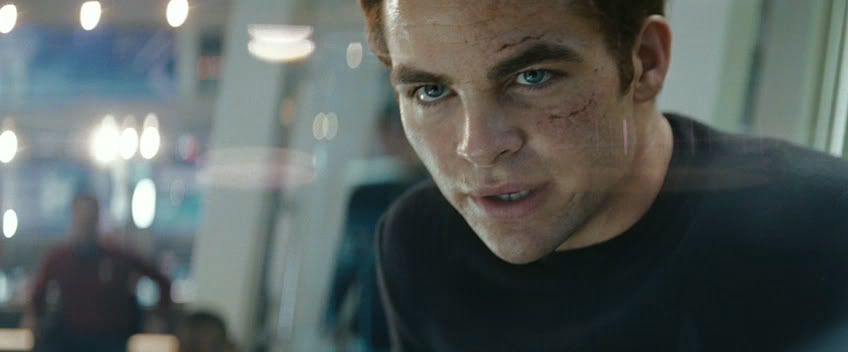
The spatial distribution of the lens flare typically manifests as several starbursts, rings, or circles in a row across the image or view. Lens flare patterns typically spread widely across the scene and change location with the camera's movement relative to light sources, tracking with the light position and fading as the camera points away from the bright light until it causes no flare at all. The specific spatial distribution of the flare depends on the shape of the aperture of the image formation elements. For example, if the lens has a 6-bladed aperture, the flare may have a hexagonal pattern.
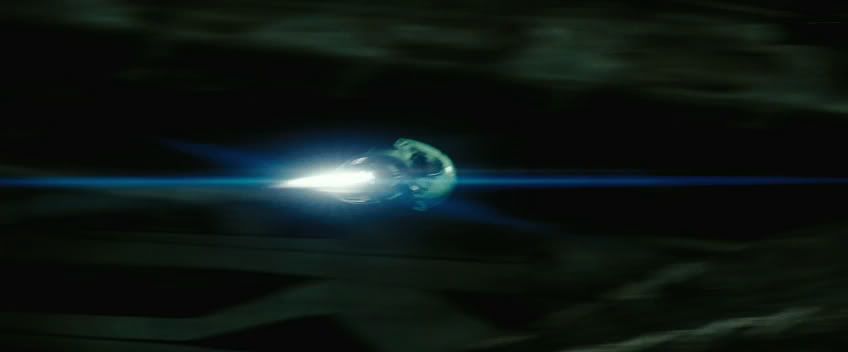
Such internal scattering is also present in the human eye, and manifests in an unwanted veiling glare most obvious when viewing very bright lights or highly reflective (e.g. specular) surfaces. In some situations, eyelashes can also create flare-like irregularities, although these are technically diffraction artifacts.
I know what you're saying with the lens flares. It was one of those things... I wanted a visual system that felt unique. I know there are certain shots where even I watch and think, "Oh that's ridiculous, that was too many." But I love the idea that the future was so bright it couldn't be contained in the frame.

When a bright light source is shining on the lens but not in its field of view, lens flare appears as a haze that washes out the image and reduces contrast. This can be avoided by shading the lens (the purpose for which lens hoods are designed). In a studio, a gobo or set of barn doors can be attached to the lighting to keep it from shining on the camera. Modern lenses use lens coatings to reduce the amount of reflection and minimize flare.
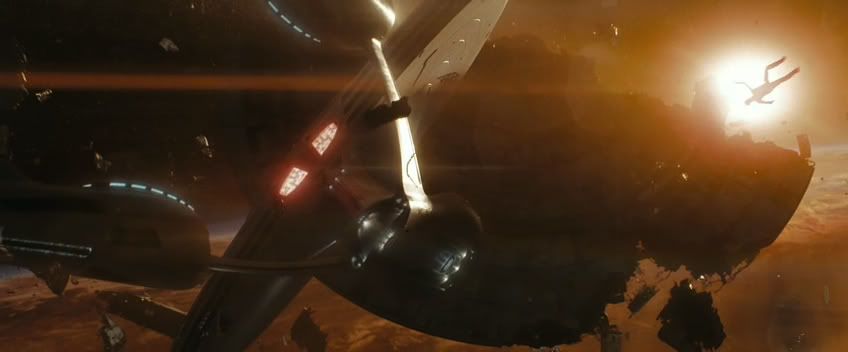
Please note the floating dude in the upper right hand corner.
A lens flare is often deliberately used to invoke a sense of drama. A lens flare is also useful when added to an artificial or modified image composition because it adds a sense of realism, implying that the image is an un-edited original photograph of a "real life" scene.
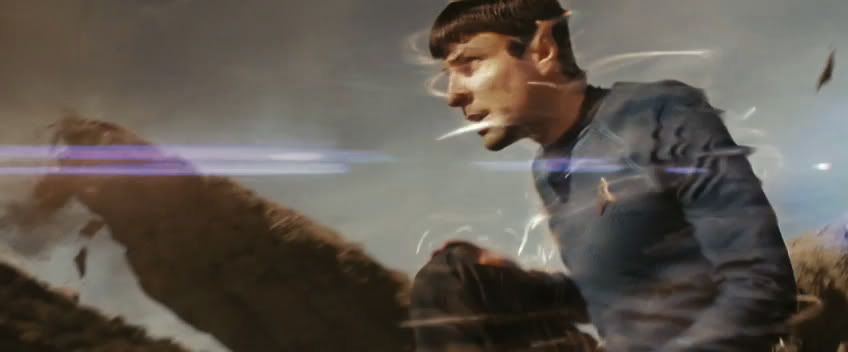
For both of these reasons (implying realism and/or drama) artificial lens flare is a common effect in various graphics editing programs, although its use can be a point of contention among professional graphic designers. Lens flare was one of the first special effects developed for computer graphics because it is the result of relatively simple optical principles. During the mid- to late-1990s, it was a popular graphical effect for computer and video games, and is now accompanied by other more complex atmospheric effects that add a greater sense of realism.
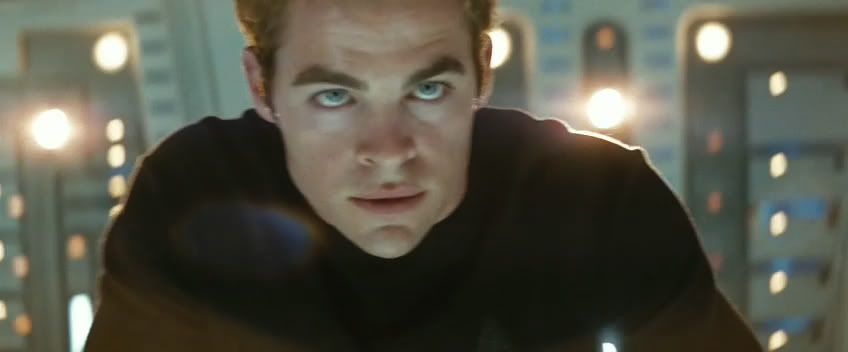
We had two cameras, so sometimes we had two different spotlight operators. When there was atmosphere in the room, you had to be really careful because you could see the beams. So it was this ridiculous, added level of pain in the ass, but I love... [looking at] the final cut, [the flares] to me, were a fun additional touch that I think, while overdone, in some places, it feels like the future is that bright.
1 & 2
LENS FLARE ORGASM:

~THE MORE YOU KNOW~
Okay, really GQs, I know this post is completely ridic, but I am seriously obsessed with lens flares now. And I know you all are too, how could you not?, so I wanted to expand our knowledge. AND, some of you may know this, and some of you may not, but personally I think that our ~thing~ for our icons (like Jokerizing, because really guys, we need ways of identifying each other) should be LENS FLARING them.
Anyway, I was lens flaring people's yesterday here, and if you want one, I will totally make one for you, or do it yourself? Either way, this should happen, Y/Y?
- JJ Abrams

Even the title has one.
I want [to create] the sense that, just off camera, something spectacular is happening. There was always a sense of something, and also there is a really cool organic layer that's a quality of it. They [lens flares] were all done live, they weren't added later. There are something about those flares, especially in a movie that can potentially be very sterile and CG and overly controlled. There is something incredibly unpredictable and gorgeous about them. It is a really fun thing. Our DP would be off camera with this incredibly powerful flashlight aiming it at the lens. It became an art because different lenses required angles, and different proximity to the lens. Sometimes, when we were outside we'd use mirrors.

Lens flare is the light scattered in lens systems through generally unwanted image formation mechanisms, such as internal reflection and scattering from material inhomogeneities in the lens. These mechanisms differ from the intended image formation mechanism that depends on refraction of the image rays. For good optical systems and most images, flare is a secondary effect that is widely distributed across the image and thus not visible. But when an image includes a very bright light source, flare generated by a bright image region can have enough intensity to become very visible. The light produced by flare mechanisms superimposes broadly across the image, adding light to dark image regions and reducing image contrast.

Lenses with large numbers of elements such as zooms tend to exhibit greater lens flare, as they contain multiple surfaces at which unwanted internal scattering occurs.

The spatial distribution of the lens flare typically manifests as several starbursts, rings, or circles in a row across the image or view. Lens flare patterns typically spread widely across the scene and change location with the camera's movement relative to light sources, tracking with the light position and fading as the camera points away from the bright light until it causes no flare at all. The specific spatial distribution of the flare depends on the shape of the aperture of the image formation elements. For example, if the lens has a 6-bladed aperture, the flare may have a hexagonal pattern.

Such internal scattering is also present in the human eye, and manifests in an unwanted veiling glare most obvious when viewing very bright lights or highly reflective (e.g. specular) surfaces. In some situations, eyelashes can also create flare-like irregularities, although these are technically diffraction artifacts.
I know what you're saying with the lens flares. It was one of those things... I wanted a visual system that felt unique. I know there are certain shots where even I watch and think, "Oh that's ridiculous, that was too many." But I love the idea that the future was so bright it couldn't be contained in the frame.

When a bright light source is shining on the lens but not in its field of view, lens flare appears as a haze that washes out the image and reduces contrast. This can be avoided by shading the lens (the purpose for which lens hoods are designed). In a studio, a gobo or set of barn doors can be attached to the lighting to keep it from shining on the camera. Modern lenses use lens coatings to reduce the amount of reflection and minimize flare.

Please note the floating dude in the upper right hand corner.
A lens flare is often deliberately used to invoke a sense of drama. A lens flare is also useful when added to an artificial or modified image composition because it adds a sense of realism, implying that the image is an un-edited original photograph of a "real life" scene.

For both of these reasons (implying realism and/or drama) artificial lens flare is a common effect in various graphics editing programs, although its use can be a point of contention among professional graphic designers. Lens flare was one of the first special effects developed for computer graphics because it is the result of relatively simple optical principles. During the mid- to late-1990s, it was a popular graphical effect for computer and video games, and is now accompanied by other more complex atmospheric effects that add a greater sense of realism.

We had two cameras, so sometimes we had two different spotlight operators. When there was atmosphere in the room, you had to be really careful because you could see the beams. So it was this ridiculous, added level of pain in the ass, but I love... [looking at] the final cut, [the flares] to me, were a fun additional touch that I think, while overdone, in some places, it feels like the future is that bright.
1 & 2
LENS FLARE ORGASM:

~THE MORE YOU KNOW~
Okay, really GQs, I know this post is completely ridic, but I am seriously obsessed with lens flares now. And I know you all are too, how could you not?, so I wanted to expand our knowledge. AND, some of you may know this, and some of you may not, but personally I think that our ~thing~ for our icons (like Jokerizing, because really guys, we need ways of identifying each other) should be LENS FLARING them.
Anyway, I was lens flaring people's yesterday here, and if you want one, I will totally make one for you, or do it yourself? Either way, this should happen, Y/Y?